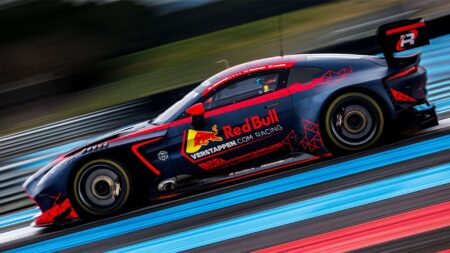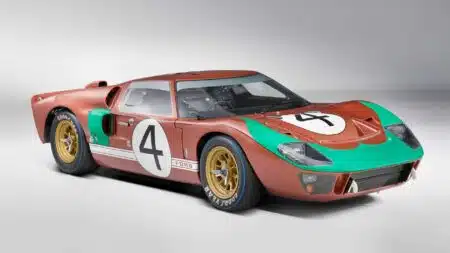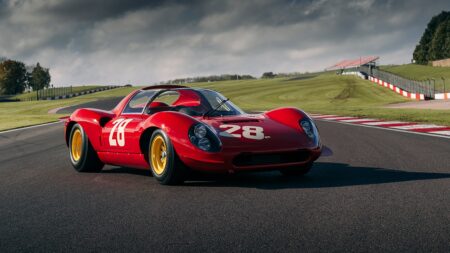
McLaren wants to win 2027 Triple Crown with Le Mans Hypercar
McLaren will enter the Le Mans Hypercar class for the very first time in 2027 – and is gunning to win motor sport's 'Triple Crown' all in one year

How Goodwood hosted the curtain raiser for British motor sport, faded through tragedy and was triumphantly revived decades later
When Bill Boddy turned up at Goodwood for its inaugural meeting on September 18, 1948, he was knowingly witnessing a ‘new era in British motor racing’.
Run by the Junior Car Club (J.C.C.), this post-war meeting was held on a 2.4-mile circuit on the site of the disused Westhampnett airfield in Chichester. It was to replace Brooklands as the home of the BARC (British Automobile Racing Club).
At the time, there were no grandstands, paddock shelters or scoreboards.
A prize pool of £500 – nearly £20,000 today – was offered for the weekend of sprint races and the Goodwood Trophy offered to the winner of a race of cars up to 1.5-litres in capacity.
‘This was one of the best struggles seen in this country since the war,’ wrote Boddy of the final race of the weekend as Reg Parnell (Maserati 4CLT/48) fended off the likes of Roy Salvadori for victory in front of 25,000 spectators. He drank out of the Goodwood Trophy, and the Duke of Richmond and Gordon followed suit.
‘In short, Goodwood is the best thing that has happened to British motor racing since the war,’ reiterated Boddy on the first meeting. ‘This programme of short races offers excellent value to all concerned. Please… let us have a repeat just as early as possible in 1949,’ he concluded.
Indeed, the second race event did take place in Easter 1949 – the BARC having managed to hastily build three covered grandstands, fencing, and a concrete wall in front of the paddock – and Parnell repeated his feat in the Richmond Trophy for Formula 1 cars, making it a hattrick the following year in the rain.
Easter Monday race meetings at Goodwood became the season opener for the British motor sport calendar, a huge new paddock constructed for 1951, and it became a Mecca for 50,000 fans, record crowds braving what seemed to be unrelenting rain year upon year in the ‘50s.
The presence in 1952 of full-blown professional drivers, including Juan Manuel Fangio and José Froilán González, showed just how important this curtain raiser was. And then there were the Nine-Hour races that ran in 1952, ‘53 and ‘55, to cater for those who demanded longer races rather than the sprints of Easter Monday.
‘Ever enterprising,’ wrote Motor Sport’s report on Aston Martin’s victory at the inaugural endurance meeting, ‘on August 16th the BARC very effectively turned Goodwood into an excellent representation of the Sarthe for the 3 p.m. to 12 midnight sports-car race.’
But spectator support – and indeed financial support – faded and the experiment ended in 1955. The Easter Monday races, however, continued.
Mike Hawthorn was a mainstay and in ‘58 won in icy conditions as 60,000 watched the Glover Trophy. This was the equivalent of a pre-season test for Ferrari, which ‘thought it worthwhile sending one of the latest F1 V6 Ferraris for Hawthorn to drive.’ But the factory team wouldn’t bring the cavalry to Sussex again. At least Hawthorn made the most of it.
Most of the meetings ended incident-free, but, in 1962, Stirling Moss (above, 1948) suffered career-ending injuries as he chased Graham Hill at St Mary’s.
‘Reports of what happened were very garbled,’ wrote Boddy. ‘The car went straight on into the bank and jack-knifed, mercifully without catching fire, it being half an hour before the unconscious driver was removed from the wreck. One commentator said the brakes had failed, another that Moss had recovered consciousness, Hill thought the Lotus crashed backwards; all apparently incorrect.’
Safety concerns led to the closure of the circuit in 1966, and the last Easter Monday meeting was held that year in front of 30,000, with Formula 2 cars now the fastest class rather than the F1 cars that had competed in the Glover Trophy from 1949-65.
Jack Brabham took the final Easter honours in his Brabham-Honda BT18.
Tragedy struck again a few years later. The July 1970 issue’s Matters of Moment ended with a tribute to Bruce McLaren, who died testing his Can-Am M8D at the Chichester circuit.
‘Some drivers get killed, others die, and you have to accept the news accordingly, and while some are received in a shocked silence others are received with open tears of grief,’ wrote a matter of fact DSJ.
‘Such was the reception of the news that Bruce McLaren had died in a crash at Goodwood, while testing his latest Can-Am Chevrolet-powered sports car. The 33-year-old New Zealander had lived for nothing else than motor racing and Bruce McLaren Motor Racing was his whole world, yet fate was to make it his death as well. It would be trite to express sympathy and say that he will be missed.’
More: A history of Thruxton
We may now know the Goodwood Motor Circuit as the venue for a spectacular gathering of valuable racing machines, for it was reopened for racing on its 50th anniversary in 1998 on the back of the Festival of Speed’s success. Local opposition based on noise and environmental concerns nearly scuppered Lord March’s plans but the five-year battle led to the Goodwood Revival.
The pits and the original clock were made to resemble the Goodwood of old, with 270,000 tonnes of earth moved to provide banking for spectators (a remedy to Boddy’s complaints of poor views in the late ‘40s) while 20,000 trees were planted to reduce noise leakage.
Seventy years on, Goodwood is a time capsule – a perfect reimagining of what was the venue for Britain’s motor sport season-opener, where F1 drivers and teams would shake off the rust from their winter sojourns. And long may it continue.

McLaren will enter the Le Mans Hypercar class for the very first time in 2027 – and is gunning to win motor sport's 'Triple Crown' all in one year

Long successful in the eSports world, Max Verstappen is expanding his own racing team to now take on a full real-life GT season – can he succeed where other F1 champs didn't?

A Ford GT40 MkII which managed 12 laps at the famous 1966 Le Mans 24 Hours has become been auctioned for a record amount

The Ferrari Dino 206 S might just be the best looking car ever to emerge from Maranello – Andrew Frankel gets behind the wheel in this month's magazine